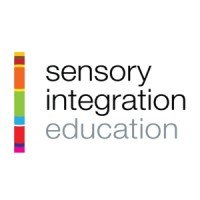First…
Before we start, we need to differentiate between the roles of an attachment figure and that of a supportive adult (which is what we aim to be for children we work with). It is important to note that both provide the child with a secure base.
An Attachment Figure
A relationship with an attachment figure is developed over a long period of time (years) and the relationship is characterized by intense emotion.
A caregiver, parent, romantic partner, or close friend can all be attachment figures.
A Supportive Adult
A relationship with a supportive adult is different than one with an attachment figure in two ways:
1. it is developed over a significant period but (usually) not years AND
2. the relationship is characterized by respect mainly
The Secure Child
The child who has experienced secure base relationships in the family takes the following into school with them:
• I am loved and lovable
• Adults can be trusted to be available for me
• I can explore and return for help
The secure child takes these positive expectations of self and others (their internal working model) into new relationships in nursery, school and other activities. In this way, others tend to respond more positively to a secure child who has positive expectations of self and others and is happy to play and learn.
The Insecure Child
On the other hand, children who haven’t experienced a secure base relationship may develop defensive strategies for coping/attempting to get their needs met like shutting down or denying emotional needs and feelings, being self reliant. They may also become emotionally demanding, confused, aggressive or controlling. Early coping strategies will develop by the age of 12 months like not showing emotions or making demands.
Unresolved fear or anxiety beyond the child’s capacity to cope is sometimes known as trauma, which can have lasting effects on thinking, emotions and behaviour.
The child who has experienced insecure relationships in the family may start to think:
-
“I am not loved or lovable”
-
“adults cannot always be trusted to be available for me”
-
“it is too risky to explore or try new things”.
The child takes these negative expectations of self and others, their internal working model, into new relationships in nursery, school and other activities, so others (adults and children) tend to respond less positively to a child who has negative expectations of self and others and may be very needy, demanding or aggressive.
From first entering school, all children’s learning and development can be supported by secure base relationships with staff members – insecure children in particular will benefit but all children feel anxious at times. These relationships will build trust, provide reassurance, reduce anxiety and so enhance children’s capacity for learning. They also enhance children’s capacity to manage their feelings and behaviour, to build self-esteem and to form co-operative relationships with staff and peers.
If you want to read more, here is a research paper that explores the history of the research on teacher-student relationships over the past 3 decades!
Let’s dive deeper into the essential concepts relating to attachment, different attachment styles, and how to build a secure attachment…








